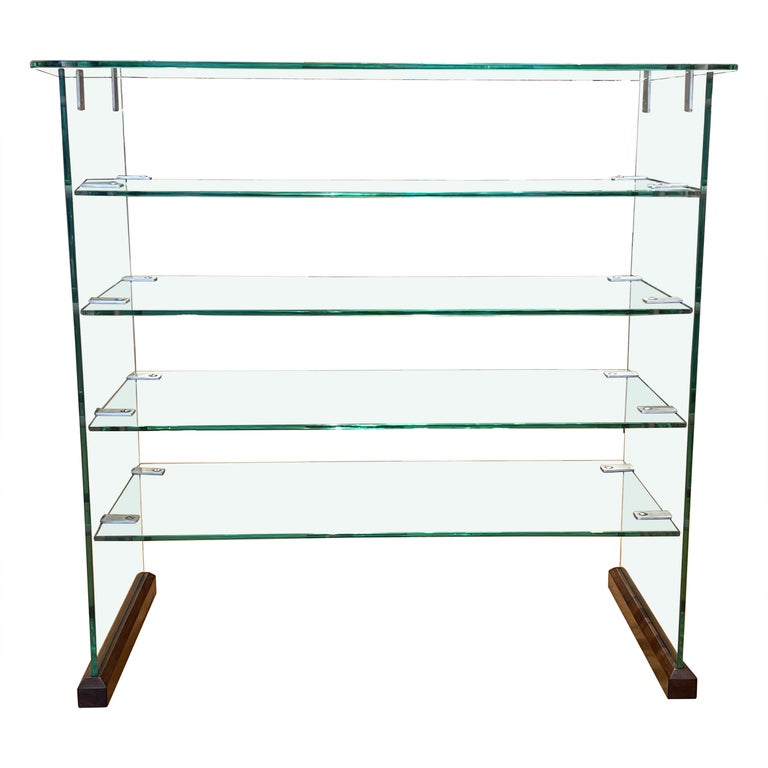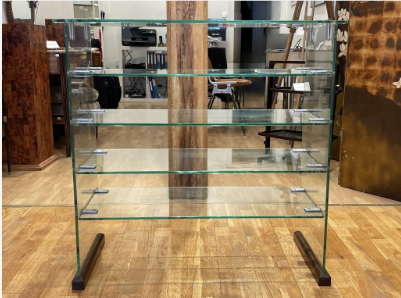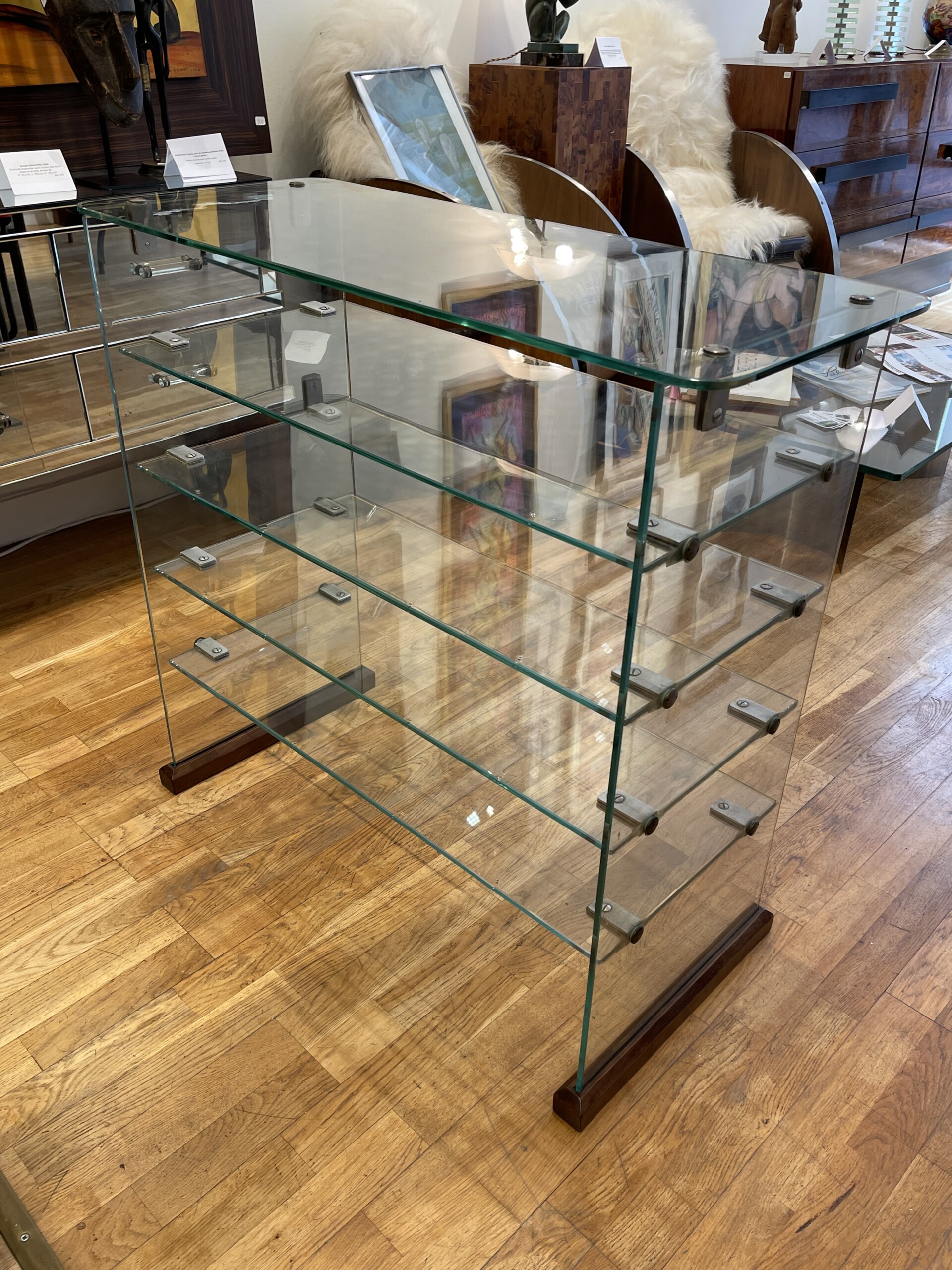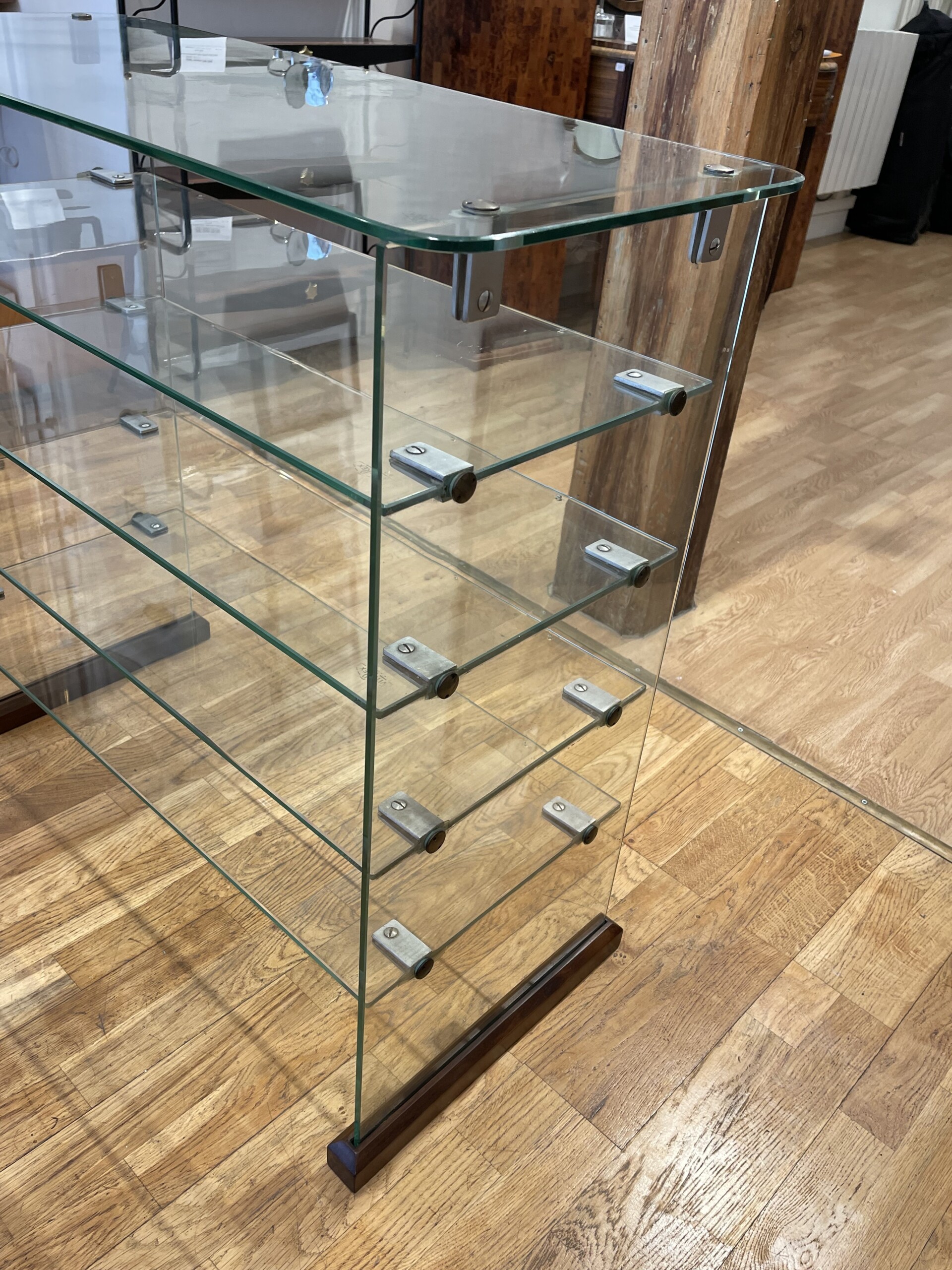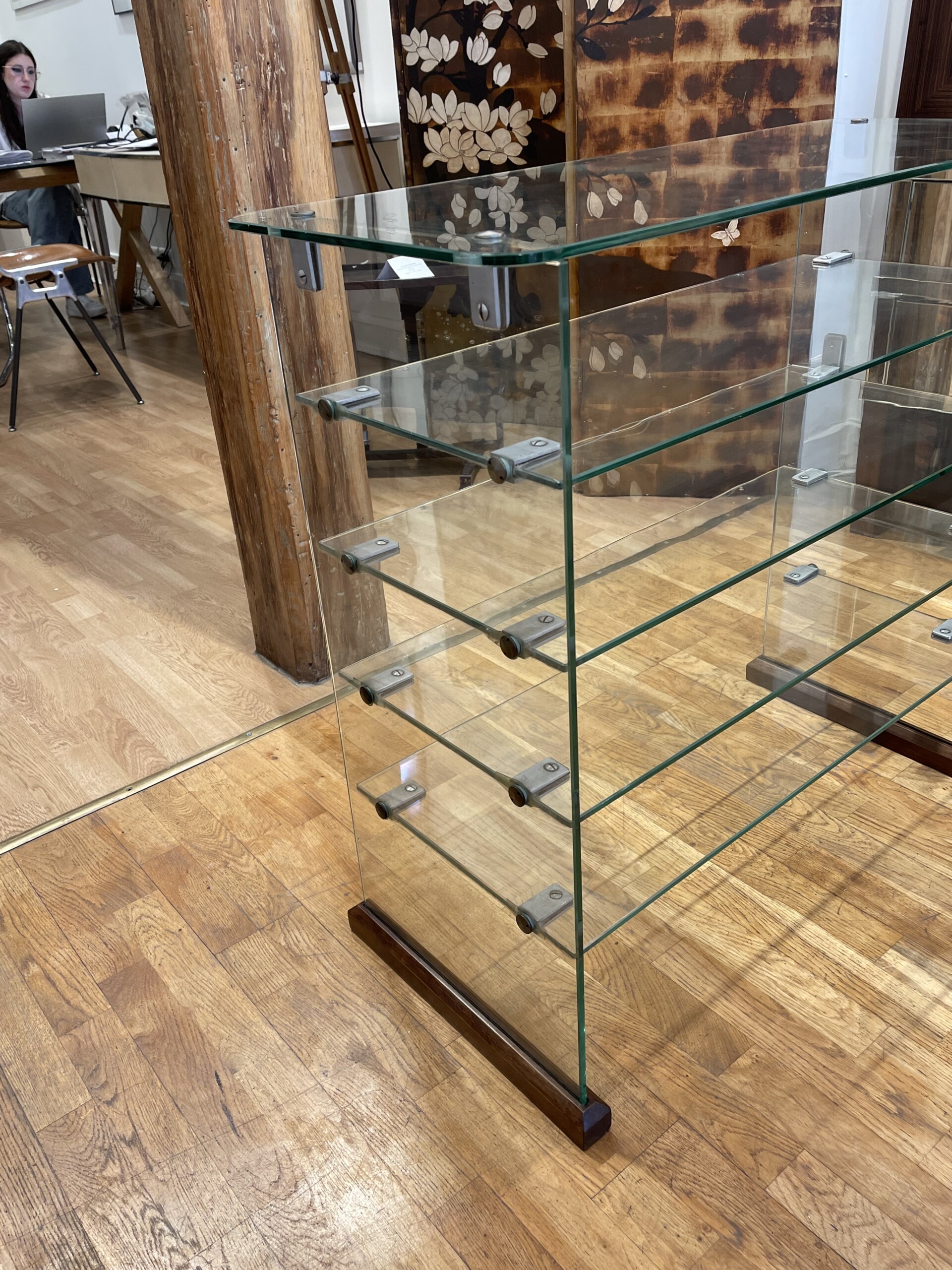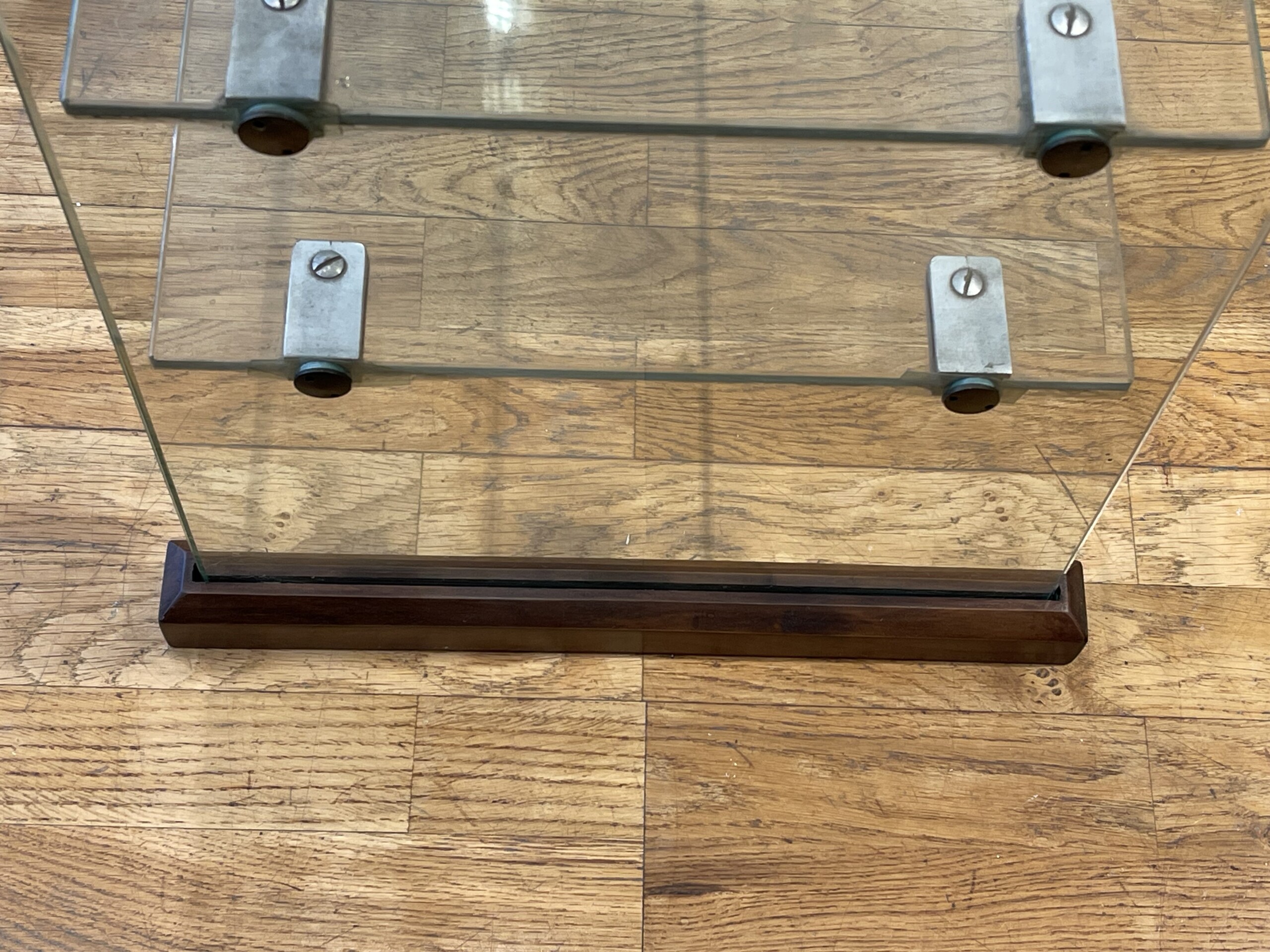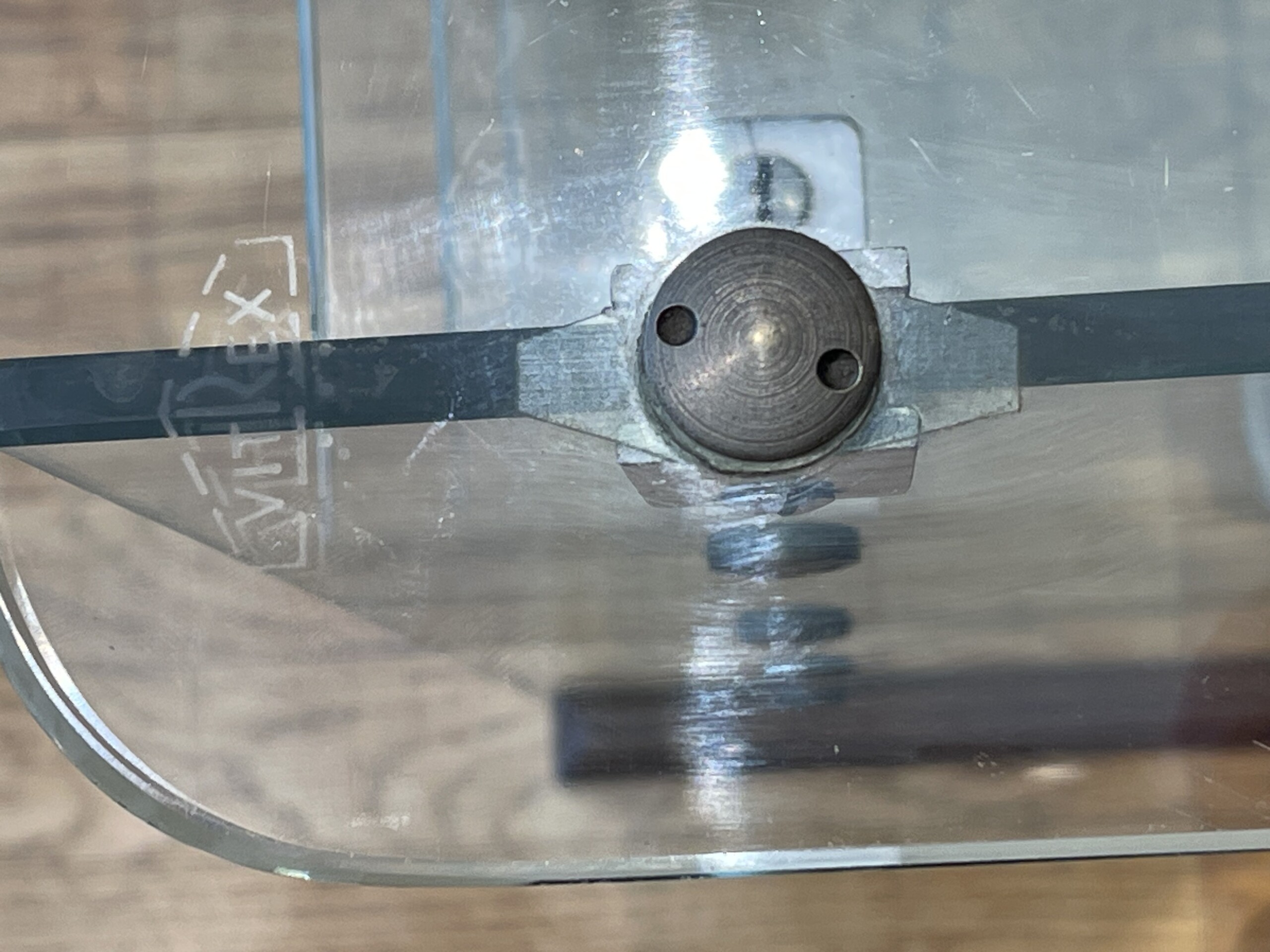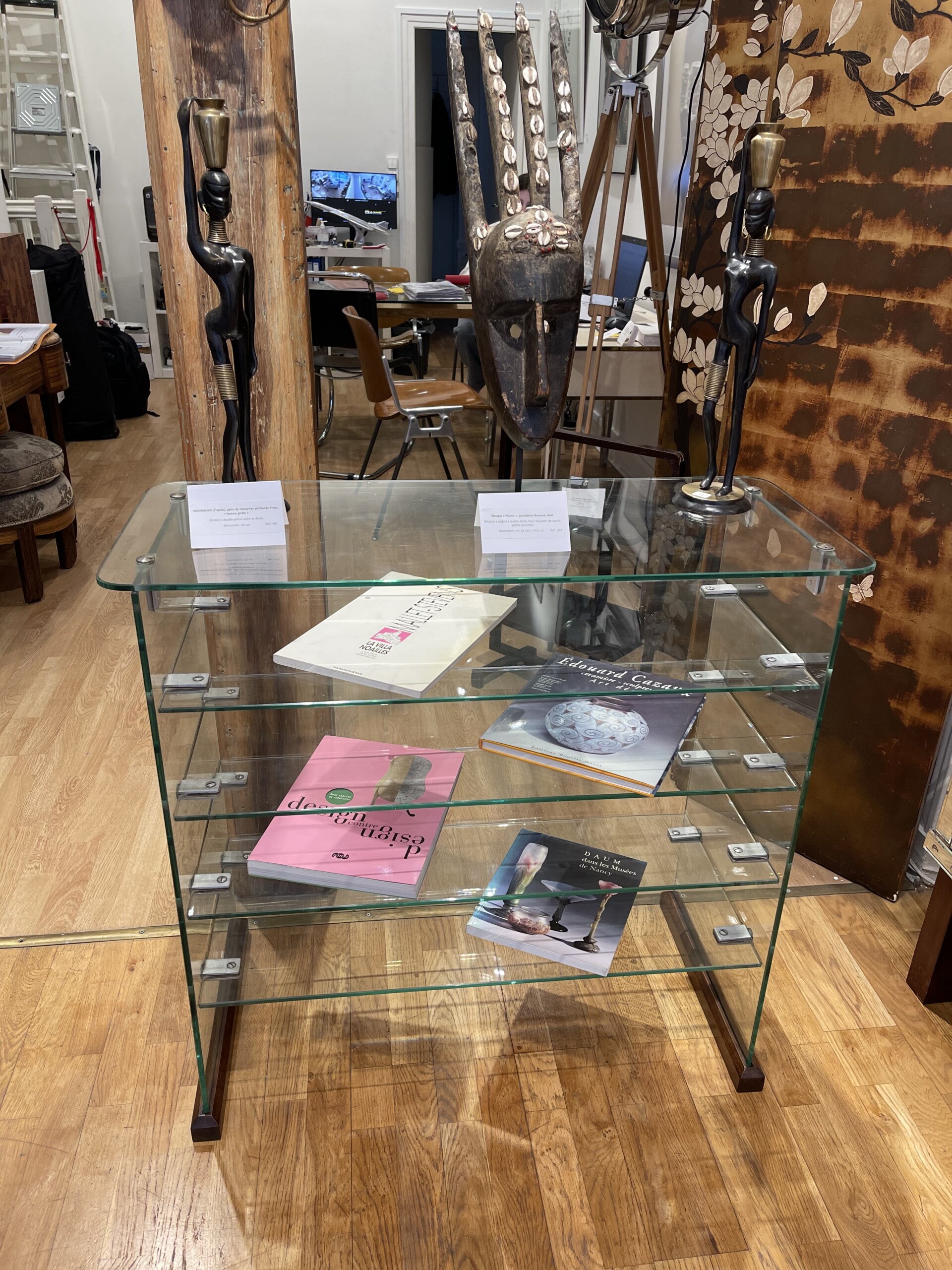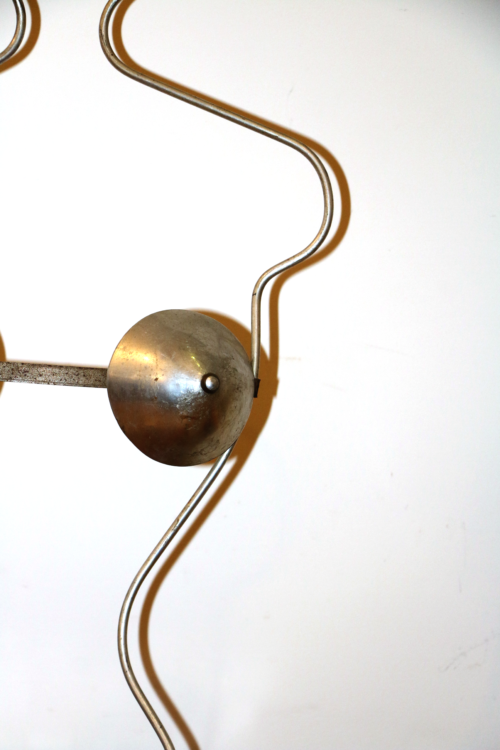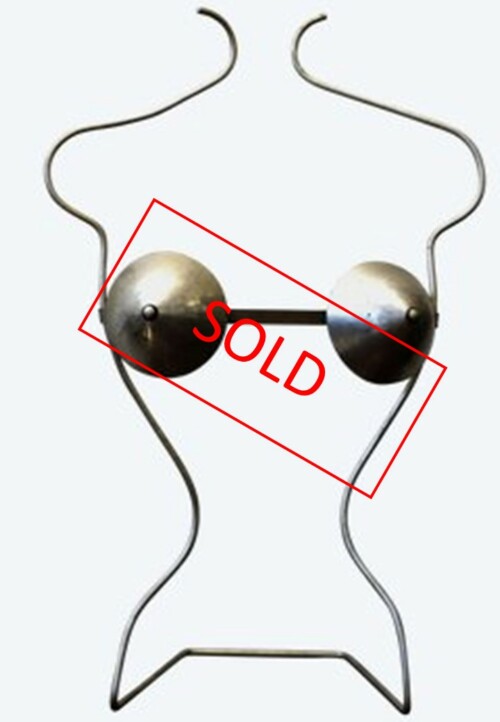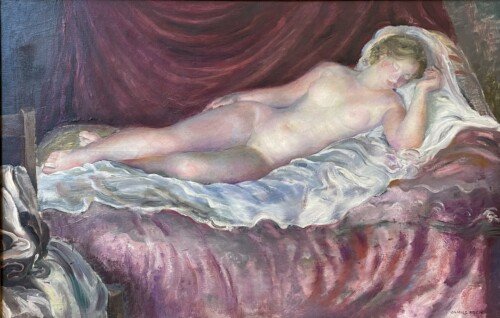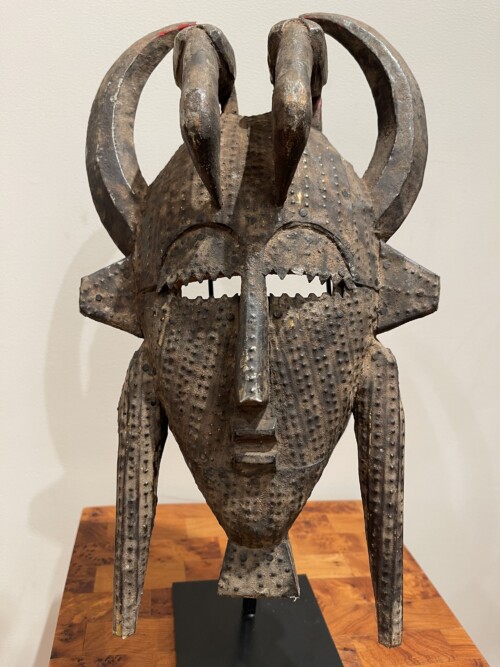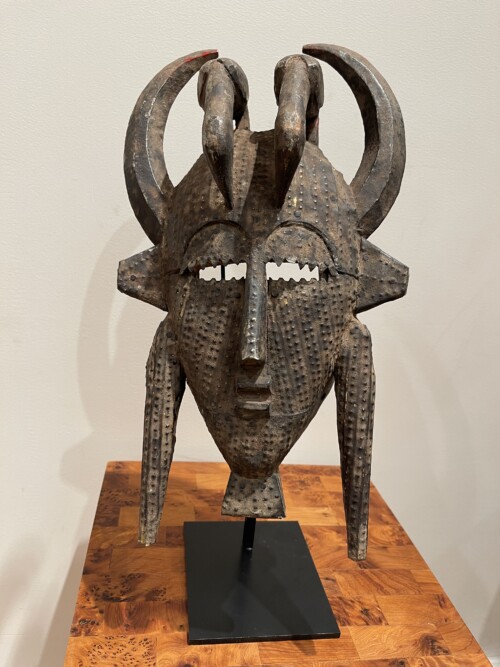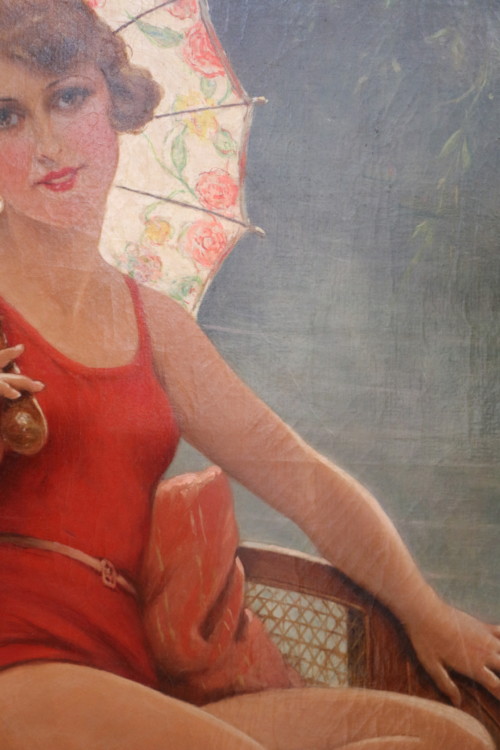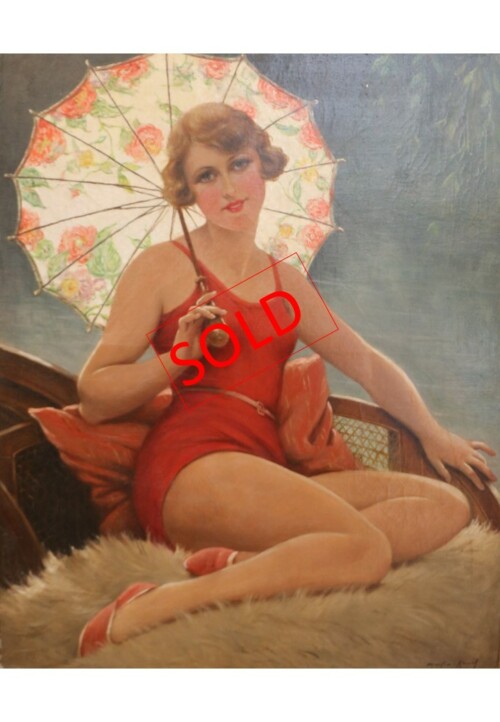GIO PONTI, Etagère en laiton et verre, Circa 1939
Elégante étagère de laiton et de verre, comportant cinq étagères soutenues de bois maintenues par deux lames de verres aux extrémités, le tout solidement relié et fixé par des vis en laiton.
Le verre est engravé « Vitrex »
Réalisé à l’origine pour les bureaux de la société Ventrocoke à Milan
Gio Ponti est diplômé de l’Ecole Polytechnique de Milan, et ouvre en 1921 son cabinet d’architecture. Il est nommé directeur artistique de la manufacture de porcelaine Richard-Ginori en 1923. En 1925,il remporte un grand prix à l’Exposition internationale des Arts Décoratifs de Paris. Il collabore également avec les marques Christofle à Paris et Venini à Murano. En parallèle, il crééé galement des séries de meubles Art Deco à des prix accessibles , La Rinascente, pour les grands magasins italiens un choix. S’ajoute à cela sa revue Domus fondée en 1928 dans laquelle il mettra en avant le « made in italy ». Dans les années 1930, il entame la construction des Case Tipiche, à Milan, et des bureaux pour la société Montecatini. En 1940, il se consacre au Palazzo del Bo de l’université de Padoue. Pour finir de 1950 à 1960, Gio Ponti sera surtout connu pour son architecture qu’il déployera à travers le monde
Dimensions : H : 84 cm L : 88 cm P : 37 cm
GIO PONTI, Brass and glass shelf, Circa 1939
Elegant brass and glass shelf, featuring five supported wooden shelves held by two glass blades at the ends, all securely connected and fixed by brass screws.
The glass is engraved «Vitrex»
Originally designed for the Ventrocoke offices in Milan
Gio Ponti graduated from the Polytechnic of Milan, and opened his architectural practice in 1921. He was appointed artistic director of the Richard-Ginori porcelain factory in 1923. In 1925, he won a grand prize at the International Exhibition of Decorative Arts in Paris. He also collaborates with the brands Christofle in Paris and Venini in Murano. In parallel, he also created series of Art Deco furniture at affordable prices , La Rinascente, for Italian department stores a choice. In addition to this, his magazine Domus, founded in 1928, will highlight the «made in italy». In the 1930s, he began the construction of the Case Tipiche in Milan and offices for the company Montecatini. In 1940 he dedicated himself to the Palazzo del Bo of the University of Padua. To finish from 1950 to 1960, Gio Ponti will be best known for his architecture that he will deploy around the world
Dimensions: H: 33.1 in W: 34.5 in D: 14.5 in
